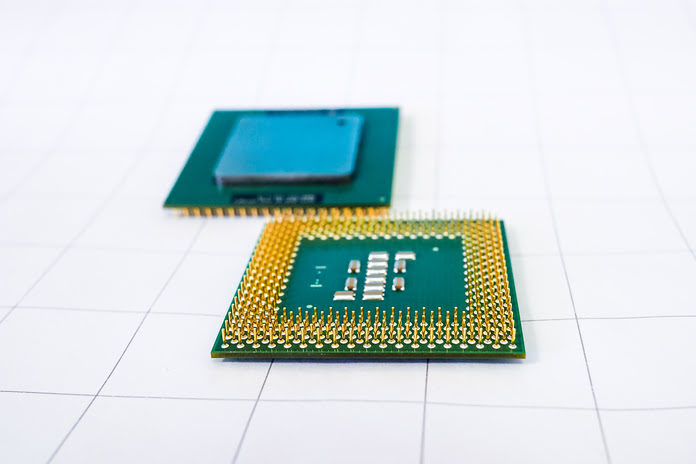Advanced Micro Devices Inc. (NASDAQ:AMD) is under the spotlight as its stock tumbles below the $80 mark. The recent selloff, which erased nearly 20% of AMD’s value in just one week, has left investors questioning the company’s near-term prospects. As trade tensions rise and competition heats up, the AMD stock outlook is being reevaluated by analysts and shareholders alike.
Let’s explore what’s behind the drop in AMD shares, how the company is positioned against rivals like Nvidia Corporation (NASDAQ:NVDA), and whether now might be a smart time to buy the dip or wait on the sidelines.
Trade Tensions Rattle AMD Stock Outlook
The AMD stock outlook has darkened due to rising geopolitical concerns. A new wave of reciprocal tariffs introduced by the Trump administration has created market uncertainty. While semiconductors were exempted for now, new levies on wafer fabrication equipment are beginning to reverberate through the semiconductor supply chain.
Advanced Micro Devices, which relies heavily on Taiwan Semiconductor Manufacturing Co. (NYSE:TSM) for chip production, could feel the squeeze indirectly. Any slowdown or cost pressure at TSM could ultimately reduce AMD’s margins. Unlike its chief rival Nvidia, AMD has a significantly lower gross margin—53% vs. Nvidia’s 75.5%—which leaves it less room to absorb rising costs without sacrificing profits.
AMD’s China Exposure Is a Key Risk Factor
Another major threat to the AMD stock outlook is the company’s exposure to China. In 2024, AMD generated over 24% of its total revenue from China and Hong Kong, totaling $6.23 billion. If trade relations between the U.S. and China deteriorate further, retaliatory tariffs or restrictions could make AMD’s products more expensive—and less competitive—in one of its largest markets.
These concerns have already prompted Wall Street reactions. KeyBanc Capital Markets downgraded AMD stock from “Buy” to “Hold,” citing uncertainty in its AI business in China and ongoing margin concerns.
Long-Term Growth Drivers Are Still in Play
Despite these challenges, the long-term AMD stock outlook isn’t all bearish. The company has shown strong momentum in the data center and AI markets—areas that are central to AMD’s future growth strategy. In 2024, AMD’s data center revenue soared to $12.6 billion, a 94% year-over-year increase, driven by robust demand for its Instinct MI300X GPUs.
AMD is also doubling down on its AI ambitions with the acquisition of Silo AI. This move strengthens AMD’s capabilities in developing custom AI models optimized for its GPU hardware, positioning it better in the fight for AI market share.
Looking ahead, AMD is aggressively building out its next-generation product roadmap. The MI325X GPUs are already in ramp-up mode, while the MI350 and MI400 series are under development, promising improved performance and energy efficiency. The company is also investing heavily in ROCm, its open software stack for high-performance computing.
Valuation: Opportunity or Warning Sign?
From a valuation perspective, AMD stock is now trading at a forward P/E of 21.6x, making it more affordable than Nvidia’s 23.5x. Analysts forecast earnings of $3.87 per share in 2025, up nearly 48% year-over-year, and expect further bottom-line growth of 36% in 2026.
However, this valuation becomes less compelling when compared to Nvidia’s market dominance, higher margins, and greater insulation from trade-related disruptions. Nvidia remains the leader in AI GPU sales and has more leeway to navigate pricing pressures.
Final Verdict on AMD Stock Outlook
The AMD stock outlook is a mixed bag. While the long-term fundamentals—especially in data centers and AI—remain attractive, short-term risks around trade policy, manufacturing costs, and margin pressure could continue to weigh on performance.
For long-term investors willing to ride out volatility, AMD stock may present a value opportunity at current levels. However, those seeking a more stable play in the semiconductor sector might find Nvidia (NASDAQ:NVDA) a better option—at least until macroeconomic uncertainties clear up.
As always, doing your own research and aligning your investment choices with your risk tolerance is key.
Featured Image: Unsplash









